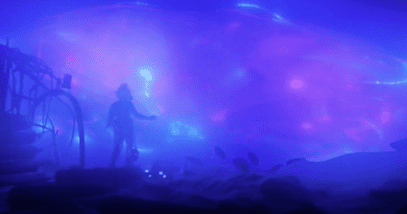 Movies and TV
Movies and TV  Movies and TV
Movies and TV  History
History 10 Things You Didn’t Know About the American National Anthem
 Technology
Technology Top 10 Everyday Tech Buzzwords That Hide a Darker Past
 Humans
Humans 10 Everyday Human Behaviors That Are Actually Survival Instincts
 Animals
Animals 10 Animals That Humiliated and Harmed Historical Leaders
 History
History 10 Most Influential Protests in Modern History
 Creepy
Creepy 10 More Representations of Death from Myth, Legend, and Folktale
 Technology
Technology 10 Scientific Breakthroughs of 2025 That’ll Change Everything
 Our World
Our World 10 Ways Icelandic Culture Makes Other Countries Look Boring
 Misconceptions
Misconceptions 10 Common Misconceptions About the Victorian Era
 Movies and TV
Movies and TV The 10 Coolest Stars to Set Sail on The Love Boat
 History
History 10 Things You Didn’t Know About the American National Anthem
 Technology
Technology Top 10 Everyday Tech Buzzwords That Hide a Darker Past
Who's Behind Listverse?

Jamie Frater
Head Editor
Jamie founded Listverse due to an insatiable desire to share fascinating, obscure, and bizarre facts. He has been a guest speaker on numerous national radio and television stations and is a five time published author.
More About Us Humans
Humans 10 Everyday Human Behaviors That Are Actually Survival Instincts
 Animals
Animals 10 Animals That Humiliated and Harmed Historical Leaders
 History
History 10 Most Influential Protests in Modern History
 Creepy
Creepy 10 More Representations of Death from Myth, Legend, and Folktale
 Technology
Technology 10 Scientific Breakthroughs of 2025 That’ll Change Everything
 Our World
Our World 10 Ways Icelandic Culture Makes Other Countries Look Boring
 Misconceptions
Misconceptions 10 Common Misconceptions About the Victorian Era
Movies and TV
Random List
 Movies and TV
Movies and TV The 10 Coolest Stars to Set Sail on The Love Boat
 Movies and TV
Movies and TV 10 Fictional Kings Who Go from Good to Bad
 Movies and TV
Movies and TV 10 Wildly Different Movie Takes on Nuclear War
 Movies and TV
Movies and TV 10 Nightmare-Inducing Kids’ TV Characters That Still Freak Us Out
 Movies and TV
Movies and TV 10 Oddly Specific Horror Movie Subgenres You’ve Probably Never Heard Of
 Movies and TV
Movies and TV 10 Of The Strangest Deaths That Occurred During Movie Productions
 Movies and TV
Movies and TV 10 Unexpectedly Deep Messages in ’70s Children’s TV Shows
 Movies and TV
Movies and TV 10 Terrifying Horror Movies Set in Space That Aren’t From The Alien Franchise
 Movies and TV
Movies and TV 10 Best Bobby Hill Quotes From King Of The Hill
 Movies and TV
Movies and TV 10 Underrated Giallo Movies That Deserve Your Attention
 Movies and TV
Movies and TV 10 Thrilling Sci-Fi Movies That Take Place At Sea
Editor’s Picks
 Movies and TV
Movies and TV 10 Psychiatric Diagnoses Of Horror Villains And Their Victims
 Movies and TV
Movies and TV 10 Greatest Movie MacGuffins Of All Time
 Movies and TV
Movies and TV 10 Iconic Movie And TV Restaurants That Are Actually Real
 Movies and TV
Movies and TV